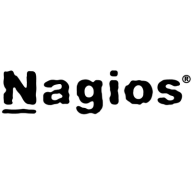

Icinga and Nagios Core are competing network monitoring solutions. Icinga appears to have an upper hand with its modern interface and flexible architecture, whereas Nagios Core's plugin ecosystem strengthens its proposition for extensive monitoring.
Features: Icinga offers a dynamic interface with cloud-native features and modular design, ensuring excellent scalability and integration with multiple platforms. Nagios Core provides extensive plugins and customizable options with a stable, longstanding framework and strong community support.
Room for Improvement: Icinga could benefit from refining its documentation for beginners and enhancing support for legacy systems. Its steep learning curve may be challenging for new users. Nagios Core might improve by modernizing its interface, reducing setup complexity, and simplifying its manual configuration processes.
Ease of Deployment and Customer Service: Icinga simplifies deployment through advanced APIs and detailed documentation, fostering smooth integration and benefiting from its supportive community. Nagios Core, despite comprehensive documentation, may require more effort during initial setup due to manual configuration. While both offer effective service, Icinga's collaborative environment often results in quicker issue resolution.
Pricing and ROI: Icinga's open-source model offers low initial setup costs, providing a clear ROI for scalability with minimal support expenses. Nagios Core also presents a low-cost entry point due to being open-source, although scaling and customization could increase overall costs. Icinga can be more cost-effective for fewer custom integrations, while Nagios Core offers long-term value in complex environments with its plugin array.
| Product | Market Share (%) |
|---|---|
| Nagios Core | 2.5% |
| Icinga | 2.8% |
| Other | 94.7% |


| Company Size | Count |
|---|---|
| Small Business | 9 |
| Midsize Enterprise | 4 |
| Large Enterprise | 7 |
| Company Size | Count |
|---|---|
| Small Business | 20 |
| Midsize Enterprise | 11 |
| Large Enterprise | 22 |
Icinga is a robust tool for monitoring IT infrastructure, known for its distributed monitoring capabilities and seamless integration with multiple platforms. It efficiently observes servers, network devices, and environments like Linux and Windows, enabling proactive issue identification and resource management.
With a focus on task delegation and clustering, Icinga offers an intuitive interface through its GUI and Icinga Director, simplifying configuration. The extensive plugin library supports diverse technologies, while the API allows automation with tools like Terraform and Ansible. Despite its strengths, users report challenges with data display in the GUI, a need for improved dashboards, and complex configuration processes. Users benefit from its SNMP alerts, email notifications, and automated incident handling, making it essential for managed service environments and enterprises.
What are the key features of Icinga?Icinga is widely adopted in IT environments for monitoring servers, networks, and applications across industries such as finance, healthcare, and technology. Its ability to integrate with various operating systems and automation platforms makes it a versatile choice for industries prioritizing comprehensive surveillance and proactive management of their infrastructure.
This is IT infrastructure monitoring's industry-standard, open-source core. Free without professional support services.
We monitor all Network Monitoring Software reviews to prevent fraudulent reviews and keep review quality high. We do not post reviews by company employees or direct competitors. We validate each review for authenticity via cross-reference with LinkedIn, and personal follow-up with the reviewer when necessary.